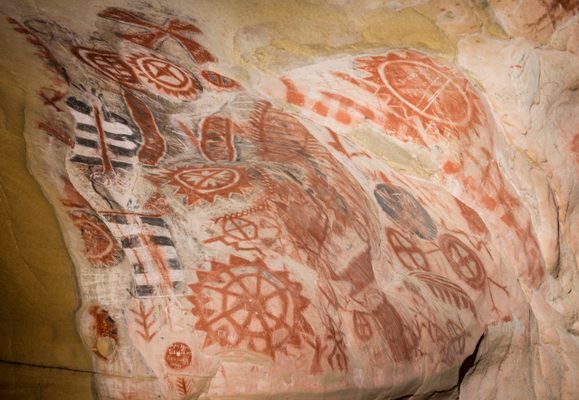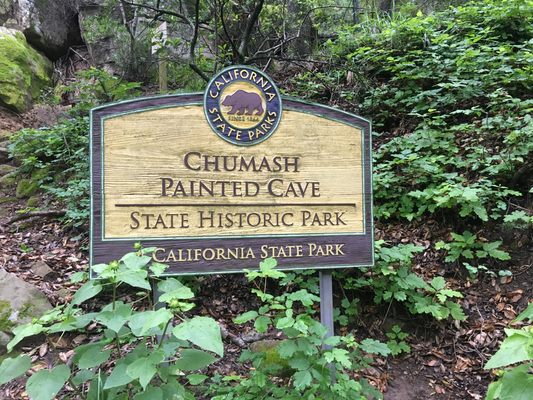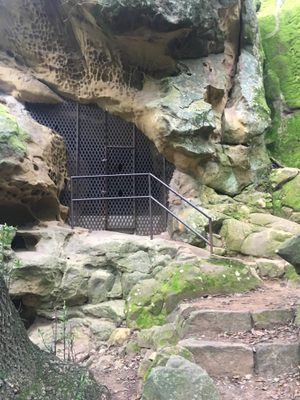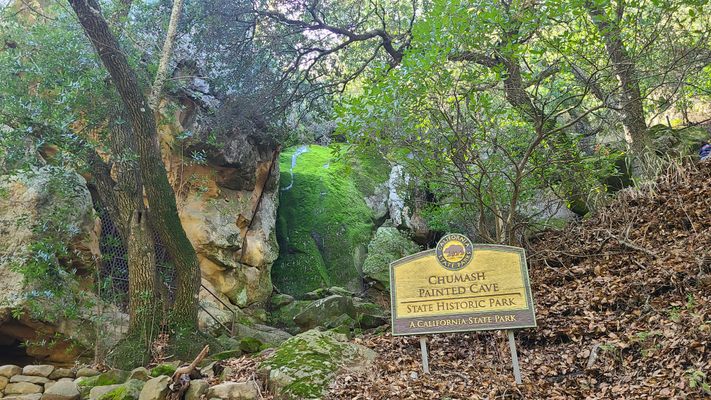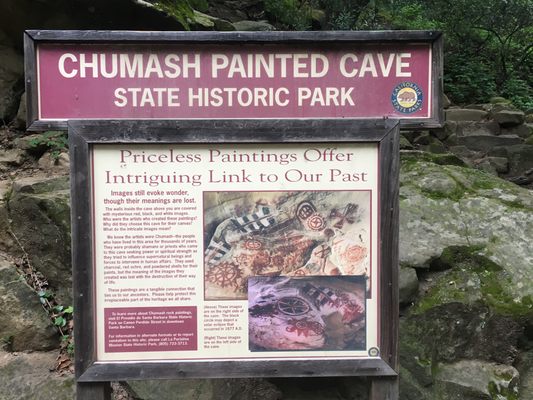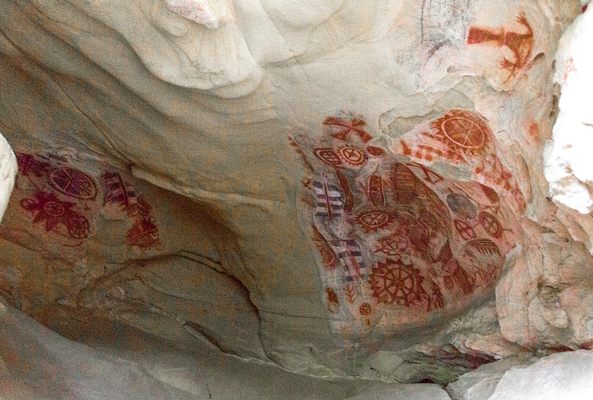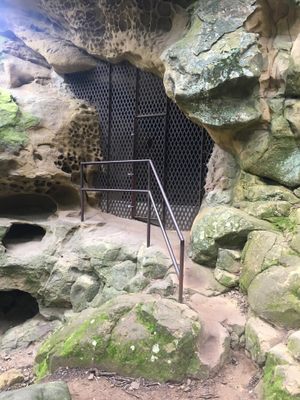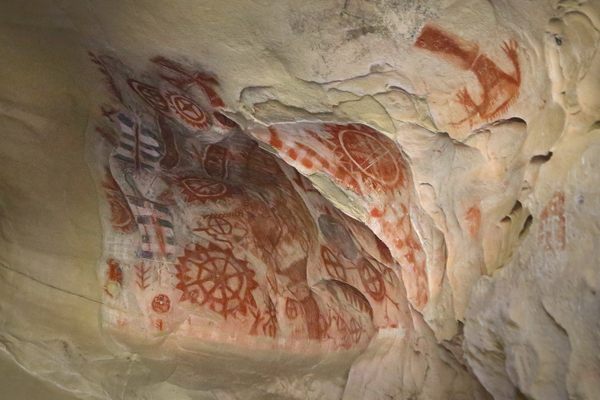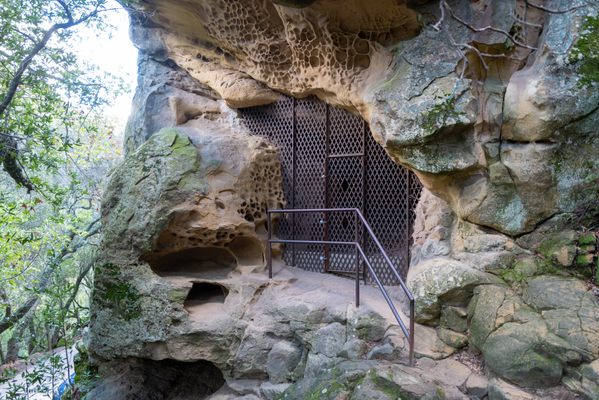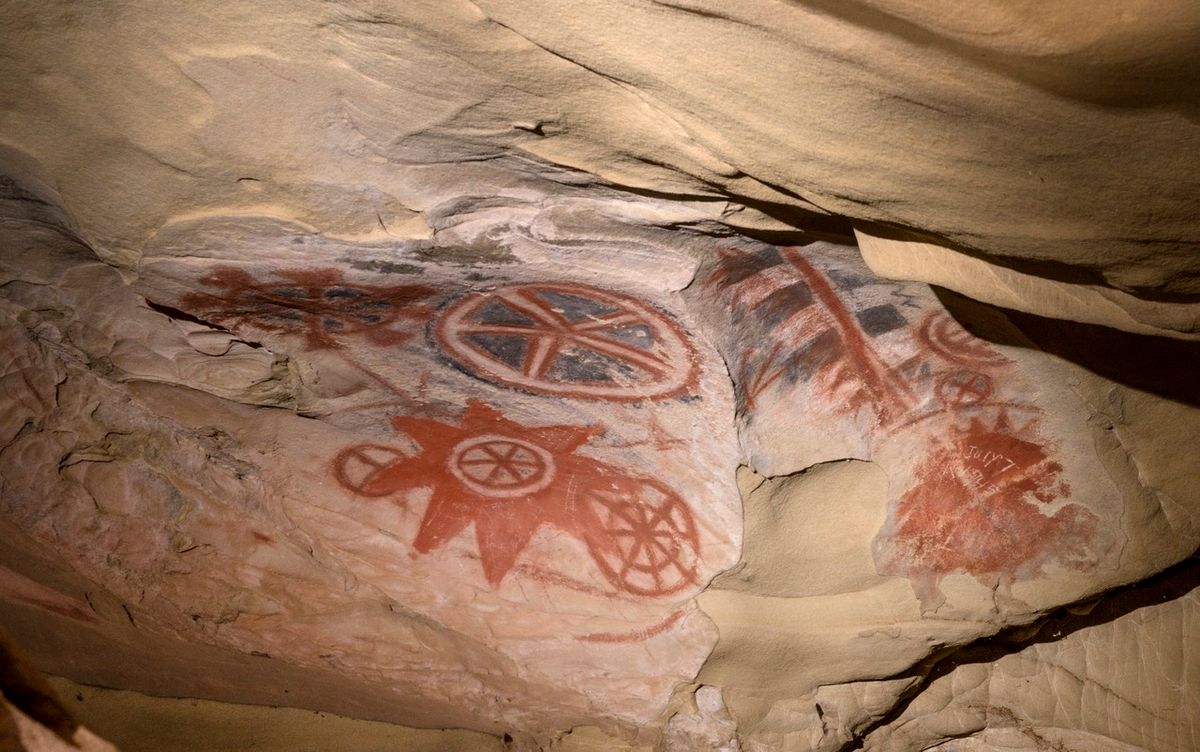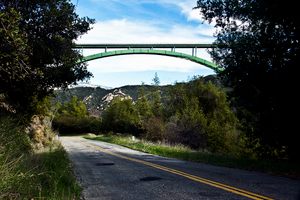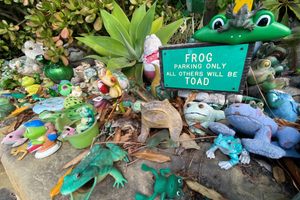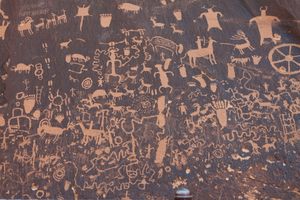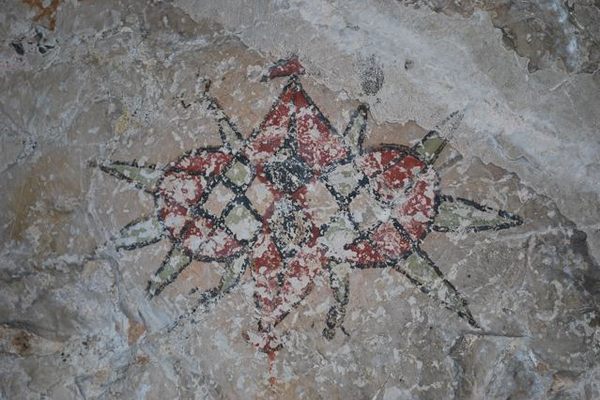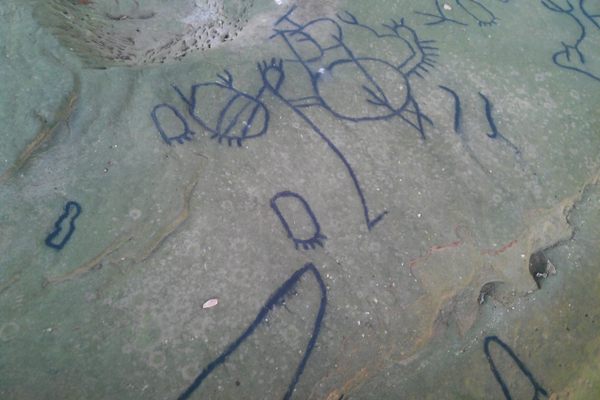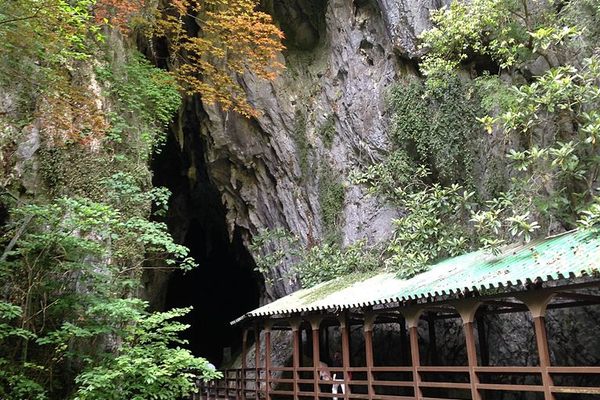About
Hidden along a narrow, steep, and windy road is a tiny piece of the Chumash Native American history preserved for visitors to view. The state park is small, and doesn’t look like much at first glance. But peek through the bars blocking the entrance to this cave, and you’ll discover striking traces of the past.
This little cave is filled with preserved art that was created long before Europeans settlers moved into California.
The colorful symbols are a bright contrast with the pale sandstone surface. Though the meaning of the images is unclear, it’s believed the artwork is related to Chumash cosmology. Though the exact age of the rock art is unknown, anthropologists estimate that the paintings were created in the 1600s, if not earlier.
The Chumash and Gabrielino-Tongva peoples were the first human inhabitants of the Channel Islands and Santa Monica Mountains areas in California. Some archaeological sites connected with the tribes and their ancestors date back as far as 15,000 years.
There is evidence that the settlers have known about this spot for years, as early migrants left their mark in the form of graffiti near the Indigenous artwork. Bars were installed over the entrance and the area was declared a state park to prevent further damage.
Related Tags
Know Before You Go
While the official address is vague, Google Maps will get you there. Just type in the name of the park. The location is around two miles up on the narrow Painted Cave Road that winds around a hill. It doesn’t really accommodate RVs and other wide vehicles. There are some private residences along the road so expect to encounter at least one other car on your way to or from the location. Also, the trip up the hill includes some great views with some spots to pull off.
The cave is just a few steps off the road. Access to the cave is blocked off by an iron grate, but there’s a big enough opening to view the artwork. The exterior of the cave also has some interesting features.
Flash photography is prohibited, as the light can damage the artwork.
Community Contributors
Added By
Edited By
Published
May 24, 2019

